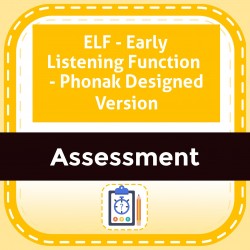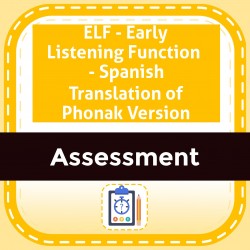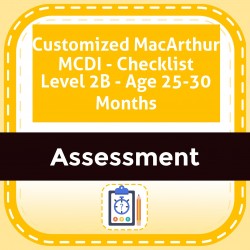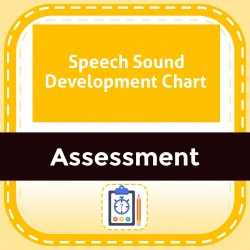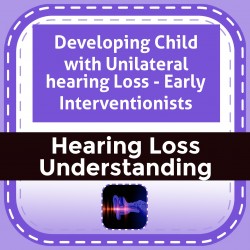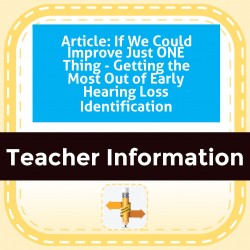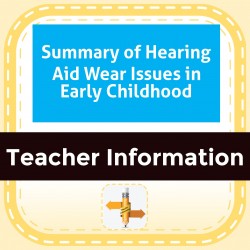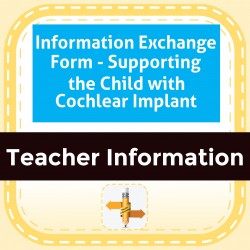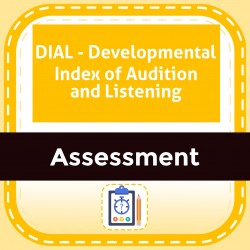Ability Levels
Categories
Resource Types
Age/Grade Range
CCSS
Anchor Standard
Speaking & Listening
Language
Reading
The Kissing Hand (HEA 11)
$ 195
The Kissing Hand - Early Childhood / Preschool teaching materials for the book includes a) a synopsis of the storybook b) a letter to send home to families explaining the storybook unit and activities
...
they can do at home c) suggestions for setting up your classroom to revolve around the story (dramatic play area, sensory area, art area, science area, book area, and bulletin board) d) activities separated into two weeks, each week including: a distinctive thematic, e) focus of the Week; Circle Time activities including songs, poems, fingerplays, and story-reading ideas; and six detailed Group Activities with designated target areas, f) snacks related to the story, g) a Pretest and Posttest
ELF - Early Listening Function - Phonak Designed Version
$ 0
Discovery tool for families to raise awareness of the impact of their child's hearing loss and size of their 'listening bubble' in quiet and noise, with and without amplification. Scorable for pre/pos
...
t-test use by DHH professionals. Version designed by Phonak.
ELF - Early Listening Function - Spanish Translation of Phonak Version
$ 0
Spanish Translation - Discovery tool for families to raise awareness of the impact of their child's hearing loss and size of their 'listening bubble' in quiet and noise, with and without amplification
...
. Scorable for pre/post-test use by DHH professionals. Version designed by Phonak.
Customized MacArthur MCDI - Checklist Level 2B - Age 25-30 Months
$ 0
MacArthur Communicative Development Inventories (MCDI) Vocabulary Checklist Level 2B. For ages 25-30 months. Receptive and Expressive vocabulary. Customized for responses that are verbal, in sign, and
...
cued.
Developing Child with Unilateral hearing Loss - Early Interventionists
$ 19
This step‐by‐step guide has been developed to share with families after unilateral hearing loss has been diagnosed, typically in infancy secondary to identification through newborn hearing screening.
...
ng. The guide reviews background information regarding what is known about the effects of hearing loss in one ear on child development. It is divided into suggested sections to correspond with pediatric audiology appointments and with home visits by an early interventionist (teacher of the deaf/hard of hearing or speech language pathologist). Three is a focus on language and social development and a trial with amplification.
Article: If We Could Improve Just ONE Thing - Getting the Most Out of Early Hearing Loss Identification
$ 0
Informational article describing the relationship between consistency of amplification use from an early age and successful child learning outcomes. For audiologists and early intervention providers.
Summary of Hearing Aid Wear Issues in Early Childhood
$ 1
Summary of issues in getting young children to use hearing aids and what families can do. Chart listing why children may reject their hearing aids and what families can do when the child rejects heari
...
ng aids. Divided into age ranges from K-2; 3-5 years. Also includes information on baby temperament as it can effect hearing aid use and the powerful handout Attitude is Caught, Not Taught which sheds light on how parent behavior helps shape child attitudes toward hearing aid use and hearing loss.
Information Exchange Form - Supporting the Child with Cochlear Implant
$ 0
This form is designed to be used, with parent permission, to gather relevant information about a child with cochlear implants or hearing aids including all service providers, hearing device informatio
...
n, communication checklist, MaP or hearing aid fitting information.
DIAL - Developmental Index of Audition and Listening
$ 0
Chart listing listening behaviors at specific ages ranging from 0-28 days through 22 years.
 Your browser is out of date. For best experience switch to latest updated Browser.
Your browser is out of date. For best experience switch to latest updated Browser.
 Get Chrome
Get Chrome Get Edge
Get Edge Get Firefox
Get Firefox
